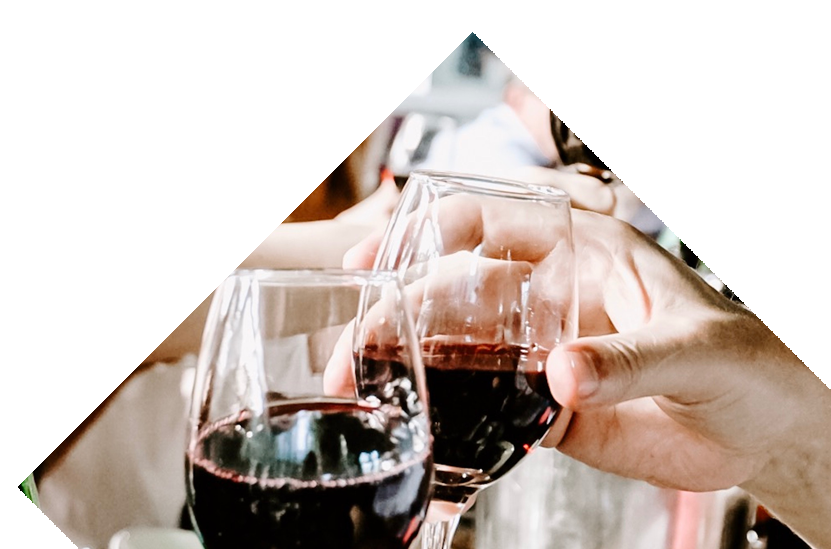Quick beer guide
The beer industry has gone full circle over the last couple of decades as many small regional brewers were swallowed up by the brewing giants. This did not go down well with ‘real’ ale drinkers, and microbreweries sprang up at an ever-increasing rate to cater for this demand and since enjoyed a major resurgence in popularity.
If you are unsure of some of the terms used to describe the beers and ales on our website we hope the short guide below will help.
Ale
In medieval times, ale was safer to drink than most water and was consumed in large quantities even by children. Small beer, as it was known, provided a significant proportion of people’s daily calorie intake, contained just enough alcohol to act as a preservative and provided hydration without intoxicating effects. It was brewed using a warm fermentation method, resulting in a sweet, full-bodied, and fruity taste. Historically, the term referred to a drink brewed without hops which were included much later on to give a more bitter flavour. Ale is pretty much the basis for all beer, excluding lager, available in the UK today.
Bitter
The term bitter has been used in England to describe pale ale since the early 19th century when customers would ask for “bitter” to differentiate it from the darker, less hoppy mild ale. Bitter is beer that varies in colour from gold to dark amber and in strength typically from 3% to 5.5%. During the 20th century, bitter became the most popular type of draught beer sold in British pubs and has been described as “the national drink of England”. In Scotland, bitter is known as either “light” or “heavy” depending on the strength, colour and body.
Brown Ale
As the name suggests this is a darker beer generally with a dark amber or brown colour. It can vary in taste from a sweet, fairly low strength beer through to a dark amber, bitter tasting pint. The most famous of these is Newcastle Brown Ale which is traditionally sold in 1-pint (or now 550ml) bottles and drunk from half pint glasses to keep the frothy head. Other brown ales were often mixed half and half with bitter or mild.
Craft Beers
These are now all the rage with new craft or micro-breweries springing up all of the time. There is no common definition of a craft beer type or strength, only that it is usually produced in small quantities by an independent brewer. However, some are now entering the mainstream and are produced in large volumes that are available across the country. Best advice is to ask for a sample before you buy a pint to make sure the taste is for you.
India Pale Ale
The export style of pale ale, which became known as IPA, was developed in England around 1840, and later became popular worldwide as a highly flavoured and refreshing drink. Created for British soldiers as a way to keep the beer from spoiling on the way to India, IPA uses larger amounts of hops and is made with a higher alcohol content than other beers, it uses top-fermenting yeast which creates a stronger, more bitter flavour than other light-coloured beers such as lager.
Lager
The name is a derivation of the German word for storeroom or warehouse where it was first commercially brewed. Lagers are made with bottom-fermenting yeasts that need the liquid they’re fermenting to be cold and still for a longish time and are best served at lower temperatures. In the UK, the only lagers available until the early 1970’s were imported, mainly from Germany, and were typically much stronger than local bitters and brown ales. Since then, all major (and micro) breweries have produced lagers to meet the steadily increasing demand with common strengths ranging from 4.0 – 5.2% ABV.
Mild
This is a type of ale with a predominantly malty palate and is now more often interpreted as being mildly hopped and therefore less bitter. It originated in Britain in the 17th century or earlier and originally meant a young ale, as opposed to a “stale” aged or old ale. Modern mild ales are mainly dark coloured with an alcohol by volume (ABV) of 3% to 3.6%, although it fell from favour in the 1960’s. There has been a recent revival mainly as a result of modern palates now preferring less bitter flavours and the improvement in beer cooling systems.
Porter
This a dark ale that reputedly dates back to the early 18th Century when the dark brown beer of London breweries became popular with the porters that carried goods around the city. It was ‘well brewed with more hops and aged longer’ than lighter beers and was often incredibly strong with an ABV of 6.6% or more. By the 1940s, porter had largely vanished in England but has enjoyed a resurgence, particularly among the micro-breweries and is notable for a generally ruby-black to deep brown colour with chocolaty, caramel or liquorice notes.
Real Ale
This is the name coined by the Campaign for Real Ale (CAMRA) for “beer brewed from traditional ingredients, matured by secondary fermentation in the container from which it is dispensed, and served without the use of extraneous carbon dioxide”. This came as a backlash against keg beer of the late 20th Century which was often filtered and/or pasteurised, both of which render the yeast inactive. Today almost every pub and bar will have a selection of real ales on offer ranging from light to dark in colour with an incredible variety of flavours.
Scotch Ale
This is what you’ll find in Scotland and is traditionally less bitter and usually darker in colour than their English counterparts. The terms ‘Heavy’ and ‘Export’ indicates stronger beers, and you may come across the beer being described in shillings e.g. Heavy is typically a 70 shilling ale with a 3.5 -4.0% ABV and Export is an 80 shilling ale with a 4.0 – 5.5% ABV. Beware the 90 shilling or strangely named ‘wee heavy’ ales as these are over 6.0%!
Stout
The most famous stout is Guinness which is a variety of porter and typically dark in colour and relatively strong compared to other ales. Interestingly stout was often drunk historically as an accompaniment to oysters and some enterprising breweries actually put oysters in the barrels which questions whether it should be drunk by vegetarians! Stout and oyster bars have grown in popularity, especially in London and Dublin.



